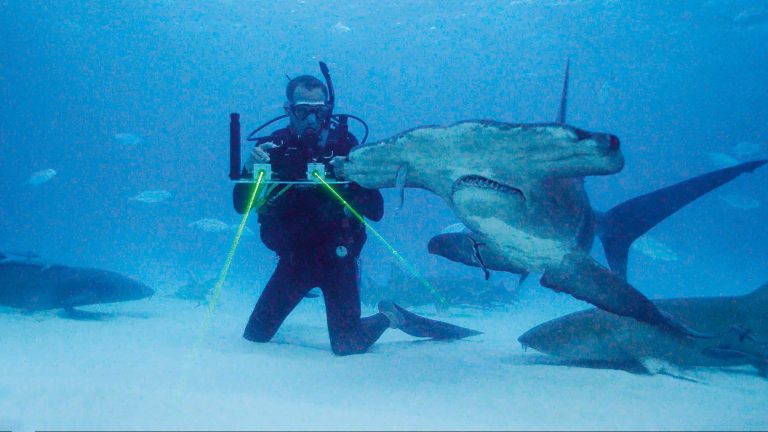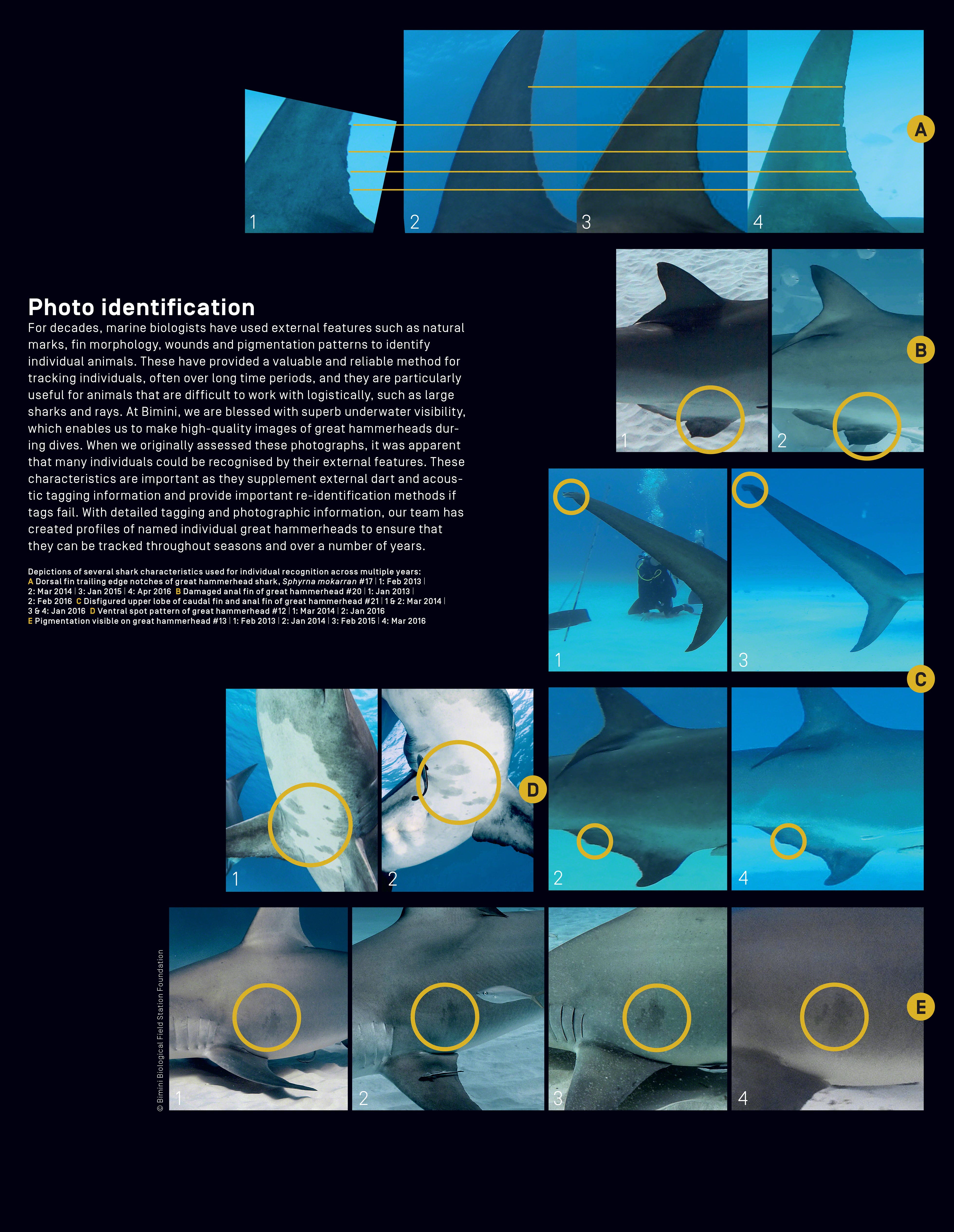Home away from home
One of the oceans’ most imposing predators, the great hammerhead shark is shrouded in mystery, its feeding and breeding grounds still largely unknown. It seems to have taken a liking to Bimini in The Bahamas, though, and researchers there are making breakthrough discoveries about where these enigmatic sharks go in summer.
Photo by Brian J. Skerry | National Geographic Creative
Extraordinary, elusive and emphatic – the great hammerhead shark Sphyrna mokarran is without doubt one of the most recognisable and charismatic large predators on earth. Not only is it a shark, but it’s a shark with a head in the shape of a monster-sized hammer. This remarkably graceful hunter reaches an intimidating size of six metres (20 feet), is known to migrate long distances and uses its sophisticated, highly evolved head-weaponry to locate, manipulate and then pin down its prey, a stingray perhaps, before consuming it. Yet despite its prominence as one of the ocean’s greatest predators, we still know little about its biology and behaviour. For example, we have no reliable estimates of its population size or natural abundance and little, if any, information about its preferred habitats or nursery grounds.
Such basic gaps in our knowledge are particularly worrying when we consider that substantial population declines are thought to have occurred throughout the species’ range as a result of overfishing. In 2006 the hammerhead family was the second-most abundant species group in the international shark-fin trade. Great hammerheads were highly sought after because of their large fins, which were particularly prized in Hong Kong and could fetch up to US$100 per pound. This popularity has not diminished and in 2016 the maximum value calculated for a single great hammerhead was US$6,429. Like other sharks and rays, great hammerheads have conservative life-history traits and their populations are likely to take decades to recover from even modest overfishing. Moreover, their transboundary migratory habits, or refusal to acknowledge national boundaries, puts them at greater risk from fishing pressure than possibly any other group of marine animals.
Sadly, even when hammerheads are not targeted, if they are hooked inadvertently they expend so much energy that many die before they can be released. In fact, between 1994 and 2005 more than 90% of great hammerheads caught in the commercial bottom-longline fishery in the north-western Atlantic and the Gulf of Mexico were dead by the time they were brought to the side of the vessel. And even if they are released promptly, many subsequently die because the stress of capture is too great for them to survive.
The challenges to improving the conservation and management of great hammerheads are significant, yet progress has been made and there are some positive signs that we are acquiring a better understanding of the species and that this is leading to legislation and ultimately protection. For example, in March 2013 the great hammerhead and two other hammerhead species were listed in the Convention on International Trade in Endangered Species’ (CITES) Appendix II, which means that international trade in products from these species is better regulated and managed and that sustainable fishing for these sharks is promoted.
Bimini Biological Field Station (BBFS)
Samuel, better known as Doc, has been studying sharks for 50 years. He discovered how sharks see and even gave us insights into how they think. He founded the Bimini Biological Field Station in 1990, and has been training and inspiring young shark researchers ever since.



